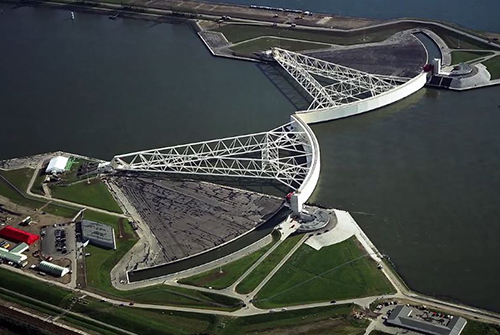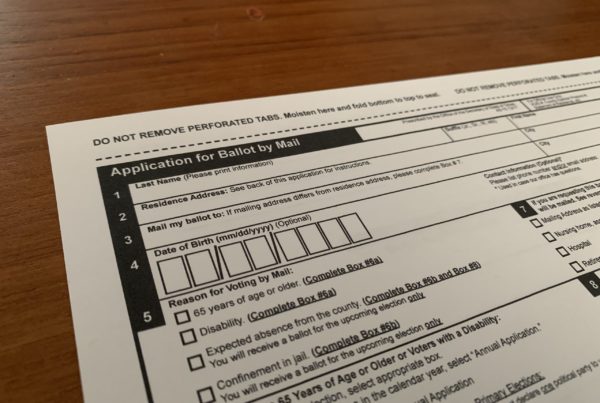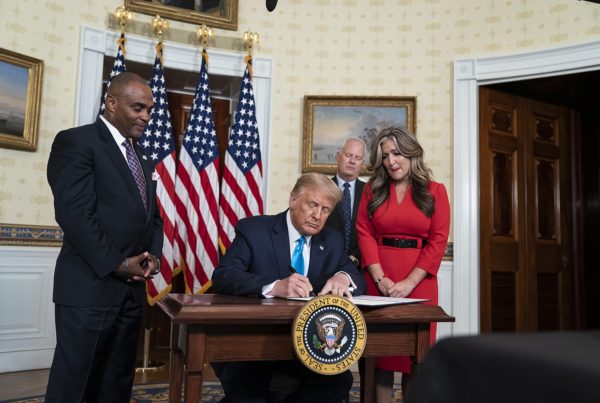When Hurricane Laura turned to the east, making landfall in Louisiana, the storm was a warning to the Houston area: A slightly different path would have caused massive damage in the region.
Many officials, with a mixed sense of relief right now and alarm for the future, said Houston dodged a bullet, and suggested the area isn’t ready for the next big storm.
“This would have been an absolutely catastrophic event for us in Houston-Galveston,” Harris County Flood Control District meteorologist Jeff Lindner said. “Just incredible devastation would have occurred both from the wind and from the storm surge.”
Because Hurricane Laura was expected to cause storm surge flooding like in Hurricane Ike — rather than rainfall flooding like in Hurricane Harvey — Houston officials on both sides of the aisle renewed calls to build a massive coastal spine project to help protect Galveston Bay.
One of those proposed projects is known as the Ike Dike, named after the storm that made landfall in Galveston 12 years ago, which gives an indication of just how long it’s been stuck in the planning stage — awaiting the studies, federal funding, and political will to complete it.
Nothing’s really been done since then to change that equation,” former Harris County Judge Ed Emmett told Houston Matters Special Edition. “There was a lot of talk about the Ike Dike, but it had some problems, the biggest problem being the cost.”
Emmett’s successor, Harris County Judge Lina Hidalgo, said the Ike Dike is now estimated to be a $31 billion project — almost exactly the same cost as Hurricane Ike, which caused an estimated $30 billion in damage — and could be completed by 2035.
She said the Houston area can’t afford to ignore this latest dire warning from Hurricane Laura.
“It’s not something we should be thinking about only when there’s a hurricane,” Hidalgo said, “but now that we’re here, it’s the time to remember, put that pressure on Congress, get that project moving. Because 2035 is too late.”
Some are blaming the federal government’s lack of political will for delays in moving the project forward.
Harris County Commissioner Adrian Garcia — who represents Precinct 2, which includes the eastern part of the county and the Ship Channel area — said President Donald Trump in particular isn’t taking the project seriously.
“I mean the president has made some inappropriate jokes about it,” Garcia said. “You know, ‘fund a $20 billion project and put it out in the middle of the Gulf.’ That’s not, obviously, what we’re trying to do here.”
In 2017, just a couple months before Hurricane Harvey hit, Texas Land Commissioner George P. Bush wrote a letter to Trump requesting $15 billion in federal funding to build the coastal spine to prevent the tremendous damage that would have been possible had Hurricane Ike taken a slightly different path.
“The deadly storm missed the Port of Houston; however, a direct hit from the hurricane would have resulted in over $100 billion in damages,” Bush said in the letter.
Last week, U.S. Sen. John Cornyn reiterated the Ike Dike is a priority but didn’t give further details. Over the years, the project may not have moved forward, but support has certainly grown on both sides of the aisle.
After Hurricane Laura avoided the Houston area, Houston Mayor Sylvester Turner, a Democrat, said he was deeply concerned by models showing the possibility of the projected storm surge hitting Galveston Bay.
“This week demonstrates the need for the coastal spine sooner rather than later,” Turner said.
U.S. Rep. Randy Weber, a Republican whose district covers parts of Galveston, also interpreted Laura as a warning to push forward with the Ike Dike. He said the Houston area needs a storm surge barrier similar to one he visited in the Netherlands.
Construction on that project was completed more than 20 years ago.
“They actually literally hold the sea back,” Weber told Houston Matters Special Edition. “If the Netherlands can do that, why can’t Americans do that?”














